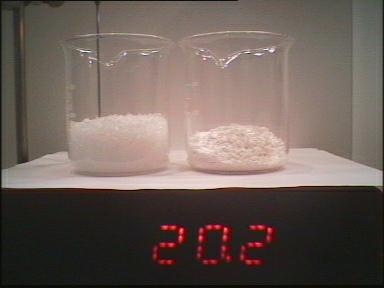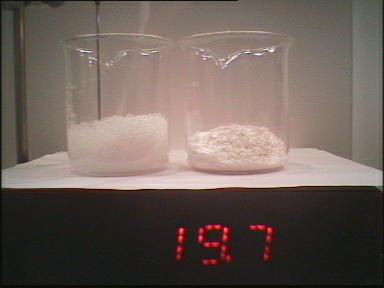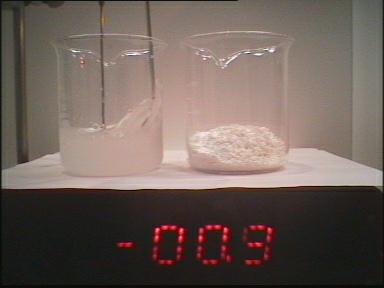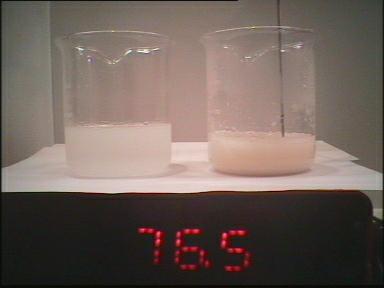| Photo1: |
Experimental setup: The glass beaker on the left contains anhydrous
calcium chloride (CaCl2× 6
H2O). The beaker on the right contains hydrous calcium chloride. |
| Photo2: |
Water is added. |
| Photo3: |
As hydrous calcium chloride dissolves in water, the temperature of
the solution lowers. This state change is endothermic. |
| Photo4: |
As anhydrous calcium chloride dissolves in water, the temperature of
the solution rises. The state change is exothermic. |
The large amount of heat released when anhydrous calcium chloride dissolves
can be traced to the formation of hexahydrates, an exothermic process.
On the other hand, the cooling that happens when hydrous calcium chloride
dissolves is due to the state change from a crystalline to a dissolved
state, an endothermic process. For this reason, one widespread application
is in the preparation of the so-called "freezing mixtures" (see our Freezing
Mixture experiment).







